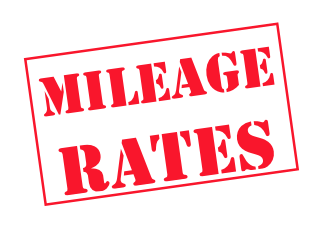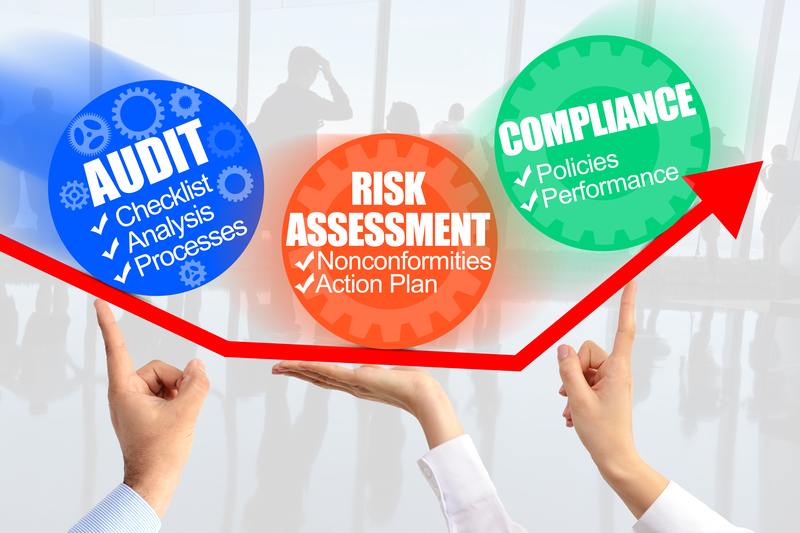- Essential Bookkeeping Habits For Audit Ready Books in Canada
- Audit Ready Books
- Company Owned Vehicles
Compliance Around Company Owned Vehicles
Applies to CCPCs | Owner Managed Corporations
By L.Kenway BComm CPB Retired
This is the year you get all your ducks in a row! Start by starting.
Published March 2, 2024 | Updated December 31, 2024
WHAT'S IN THIS ARTICLE
Company Owned Vehicles | Operating vs Capital Costs | Tax Free Allowance | Operating Benefit & Standby Charge | Operating Cost Benefit Reduction | People Employed to Sell or Lease Vehicles | CRA Audit Project | Company vs Personal Assets | Shareholder Conferred Benefits | Vehicle Purchase Limits
NEXT IN SERIES >> CRA Mileage Logbook Requirements
In 2019, the Canada Revenue Agency (CRA) started an audit project related to corporate car expenses. What were some of the compliance issues they were looking at?
 Common compliance issues with company owned vehicles are (1) businesses do not have very good auto logbooks; (2) business owners purchase cars in the owner's name instead of the corporation's name then have the company deduct vehicle expenses; and (3) business owners often only had credit card statements to back up the expenses claimed.
Common compliance issues with company owned vehicles are (1) businesses do not have very good auto logbooks; (2) business owners purchase cars in the owner's name instead of the corporation's name then have the company deduct vehicle expenses; and (3) business owners often only had credit card statements to back up the expenses claimed.Highlights Of This Post
- Company owned vehicles
- Operating costs vs capital costs
- Employee taxable benefit rates per kilometre
- Operating cost benefit and standby charge notes
- Operating cost benefit reduction
- People employed to sell or lease vehicles
- CRA's corporate car expenses audit project
- Sidebar: Company assets vs. personal assets
- Beware: shareholder conferred benefit and the company car (when a shareholder is not an employee)
- Vehicle purchase limits
Company Owned Vehicles
There are three distinct areas of CRA rules pertaining to vehicles:
(1) tax deductions for self-employed individuals,
(2) allowances and reimbursements for employee supplied automobiles, and
(3) employer supplied automobiles - the company car.
This article will discuss the third area; employer supplied automobiles (i.e., the company car). Choosing to use employer-owned vehicles can present potential tax implications for the employer and the employee.
Both perspectivse have unique taxation circumstances, benefits, and limitations. Here is a broad overview of both before we dive deeper.
What are the compliance implications to the employer when employees have company owned vehicles?
When Canadian employees are provided with company cars, employers need to consider the implications of this benefit. Operating expenses of the company car such as maintenance, fuel, and insurance are typically borne by the company. These are considered business expenses and are generally tax-deductible. The capital cost of the company car is treated as a depreciable asset, subject to Capital Cost Allowance (CCA) rules. CCA is essentially tax depreciation that can be claimed over several years depending on the class of asset the vehicle falls into. Certain restrictions apply; for example, there is a limit on the amount of CCA that can be claimed on luxury vehicles. The employer is also burdened with calculating two components of this taxable benefit - the standby charge benefit and the operating cost benefit.
What are the personal tax implications for the employee with a company owned car?
For the employee, having a company car is considered a taxable benefit. This means the value of the personal use of the car will be included in the employee's income. As mentioned, standby charge and operating benefit are two components of this taxable benefit.
- Standby charge benefit is calculated based on the original cost of the car and the number of days it is available to the employee for personal use.
- Operating cost benefit is related to the costs incurred by the employer for the operation of the vehicle and is calculated based on the personal driving portion.
If a company car does not have a personal use component, or has very low personal use, the standby charge and operating cost benefits may be reduced or eliminated, impacting the amount of the taxable benefit. An employee can also reimburse the company for the personal use portion of the operating expense of a company car to reduce the taxable benefit.
Operating Costs vs Capital Costs
Operating expenses of the company car such as gas, oil, maintenance, minor repairs (less insurance proceeds), license and registrations fees, and insurance are typically borne by the company. However, the business expense portion must be distinguishable from:
- the employee's personal use portion,
- capital costs.
Capital costs refer to the purchase of the company car. They are treated as a depreciable asset, subject to CCA rules because a vehicle has a life longer than one year. Deduction limits apply for passenger vehicles. The purpose of the limits are to prevent business owners writing off luxury vehicles as required for business purposes.
Company Owned Vehicles
Capital cost allowance special rules and limitations can be found here. Some broad overview points:
- They are broken down between zero emission vehicles (ZEV) CCA class 54; and non ZEV motor vehicles and passenger vehicles CCA classes 10 and 10.1.
- For the years 2019 to 2027, accelerated CCA is available for ZEVs.
- You are eligible to claim an interest deduction up to a limit set by CRA. The 2024 limit of $10 per day means your maximum deduction for a 30 day period is $300 or $3650 for a full year.
- Terminal losses and recapture rules are not available for class 10.1 vehicles.
- May be eligible to claim input tax credits (ITCs) on GST HST paid.
Company Leased Vehicles
Lease payment deduction special rules and limitations can be found here. Some broad overview points:
- You are allowed to claim a percentage of your lease payment to a limit.
- Personal use is not deductible.
- A capital cost ceiling reduces the deduction again based on the list price of the vehicle.
- May be eligible to claim ITCs on GST HST paid.
Company Owned Vehicles
Employee Taxable Benefit Rates Per Kilometre

CRA released the 2025 rates on December 30, 2024. The taxable benefit (means this is reported on the T4 as employment income) relating to the personal portion of automobile operating expenses paid by employers are:
| Year | Operating Expense Benefit* | Selling / Leasing Benefit** |
|---|---|---|
| 2025 | 34.0 | 31.0 |
| 2024 | 33.0 | 30.0 |
| 2023 | 33.0 | 30.0 |
| 2022 | 29.0 | 26.0 |
| 2021 | 27.0 | 24.0 |
| 2019-2020 | 28.0 | 25.0 |
| 2018 | 26.0 | 23.0 |
| 2017 | 25.0 | 22.0 |
| 2016 | 26.0 | 23.0 |
| 2013-2015 | 27.0 | 24.0 |
| 2012 | 26.0 | 23.0 |
| 2008-2011 | 24.0 | 21.0 |
| 2006-2007 | 22.0 | 19.0 |
*If employer pays the operating cost of the vehicle, defined as gas and oil, maintenance and repairs (less insurance proceeds), insurance and licence. It does not include interest, CCA, lease costs, or parking costs.
**Used if you are employed in selling or leasing vehicles and excludes the standby charges which are applicable.
Need more information about tax deductions when you purchase or lease your vehicle, read more here ...
Operating Cost Benefit And Standby Charge Benefit Notes
There are two taxable benefits associated with having a company car. (1) The operating cost benefit is now 34 cents per kilometre (33 cents per kilometre in 2024); PLUS (2) the standby charge.
The standby charge is not optional as it assigns a dollar value for the availability of the car for personal use.
For example, the standby charge is calculated as follows:
- A company owned vehicle = 2% x cost of vehicle x # of months available to the employee in the year
- A company leased vehicle = 2/3 x lease payments (excluding insurance) x # of months available to the employee in the year
However, it would be easier to use either of these options to calculate the standby charge:
- CRA's automobile benefits online calculator; or
- CRA's Form RC18 - Calculating Automobile Benefits.
TEMPORARY STANDBY CHARGE DURING PANDEMIC
For the taxation years 2020 and 2021, CRA introduced a temporary standby charge due to COVID. The temporary charge allowed employees to use their 2019 automobile usage to determine eligibility for the reduced standby charge. Only employees with an automobile provided by the same employer as 2019 were eligible for this option.
Operating Cost Benefit Reduction
You MAY be eligible for an operating cost benefit reduction IF the vehicle was used at least 50% for business (i.e., your personal use of the company car is less than 50%).
CRA defines personal driving use to include (excerpted from their website):
- driving to conduct personal activities;
- travel between home and a regular place of employment, other than a point of call. (Include any refunded expenses such as taxi fares);
- travel between home and a regular place of employment even if the employer insisted the employee drive the vehicle home, such as when he or she is on call; and
- vacation trips.
People Employed To Sell Or Lease Vehicles
In Canada, individuals who are employed in selling or leasing cars have their taxable benefit calculated differently from regular employees with a company owned vehicle.
Regular employees in Canada can be taxed on a standby charge and operating cost benefit for personal use of a company owned vehicle.
For automobile salespeople or individuals employed in leasing cars, the calculation of taxable benefits varies. It can be calculated based on the number of personal kilometres they drive and a reasonable per kilometre charge.
It is crucial to note that in all instances, the actual method of calculating the benefit can differ depending on the exact circumstances and usage of the car. Real taxable benefit can depend on various factors including if the automobile was acquired on a lease, or if it was owned by the employer, or if the car was used more for business than for personal purposes etc.
Some broad overview points:
- The original cost of the car whether purchased or leased includes GST HST PST.
- The capital cost includes the cost of capital improvements made to the car after it was purchased.
- The cost of radio equipment required for business use is not considered part of the vehicle's cost.
- The standby charged for leased cars are not subject to the limit on deductible lease payments but payment must exclude insurance.
- The standby chart calculation for leased cars ignores that some expenses are more properly classified as operating expenses.
- Lump sum lease payments at the beginning or end of a lease affect the standby charge.
- A car that must be parked at the employer's place of business at the end of the day means there would be no standby charge as the car was not available for personal use. To be seen as not available for personal use, the keys must also be returned.
It is always recommended that specific advice is sought from a tax professional or the Canada Revenue Agency to ensure the right taxes are being paid by both the employer and the employee.
CRA's Corporate Car Expenses Audit Project
 CRA audits to ensure compliance with tax laws and regulations for company-owned vehicles used by employees. Business owners must weigh the risk of non-compliance.
CRA audits to ensure compliance with tax laws and regulations for company-owned vehicles used by employees. Business owners must weigh the risk of non-compliance.In 2019, the Canada Revenue Agency (CRA) started an audit project related to corporate car expenses. What were some of the compliance issues they were looking at?
For this project, CRA was focused on companies that had claimed vehicle expense deductions. They concentrated on ensuring compliance with tax laws and regulations for company-owned vehicles used by employees. Some of the key issues the CRA typically looks for in such audits include:
1. Personal Use: The CRA ensures that the value for personal use of company cars by employees is properly included in their income as a taxable benefit. If the car is available for personal use, even if not actually utilized, there's supposed to be a standby charge and operating benefit included in the employee's income. For example CRA might ask for your company policy on dealing with personal use of the vehicle. Were you charging the employee a standby charge or did the employee reimburse you for their personal use component? They might ask to see all accounting details pertaining to expense reimbursements, car allowances, or taxable benefits.
2. Correct Reporting: The CRA checks that employers accurately report all expenses related to operating the company car, including maintenance, fuel, and insurance costs. For example, they might ask for invoices of the ten largest items in the year as well as all supporting vehicle expense transactions in a particular month or months.
3. Documentation: The CRA verifies that adequate records are maintained to distinguish between personal and business use of the vehicle. For example, they would likely request the logbook for every vehicle detailing the kilometres driven for business and personal use.
4. Capital Cost Allowance: The CRA also checks if the company is correctly applying the Capital Cost Allowance (CCA) rules to the depreciable capital cost of company cars. For example CRA might ask for a list of all vehicles where vehicle expenses were claimed; clarifying who owns them or if they were leased.
5. General Compliance: The CRA checks for general tax compliance issues, ensuring that companies are properly deducting business-related car expenses and following all related tax laws and regulations. For example they might ask to see a detailed list of the general ledger transactions for all vehicle expenses.
Some of the issues found during the audit project were:
- Businesses did not have very good auto logbooks. Without detailed logs, claims are disallowed. Learn your mileage logbook requirements to avoid CRA disallowing your vehicle expense tax deduction.
- Business owners purchased cars in the owner's name (see sidebar) instead of the corporation's name then proceeded to have the corporation deduct all the related vehicle expenses. Find out how an employer should reimburse owner-manager employee owned vehicle expenses.
- Business owners often only had credit card statements to back up the expenses claimed. They could not provide the actual invoices or receipts. Learn why this is a problem.
Company Assets vs Personal Assets
Unlike a sole proprietor, an owner / manager does NOT have free access to the company's funds and/or assets. Why? The corporation has its own legal identity that is separate from the owner / manager's identity.
What does this mean for YOU? All titles to assets MUST be held in the corporation's name, not the owner / manager's name. If an asset is registered in the owner's name, it is a personal asset regardless if the funds to purchase were removed from the corporation.
Please note that the specifics of this audit project could vary depending on the individual circumstances of each company being audited. Maintaining clear and complete records for all company owned vehicle expenses is key to ensuring compliance with CRA requirements while increasing the likelihood expenses will not be disallowed during an audit.
Beware: Shareholder Conferred Benefit and The Company Car
 A shareholder who is not a company employee using a company owned vehicle results in a benefit conferred to the shareholder. It is considered a taxable benefit reported on a T4A slip.
A shareholder who is not a company employee using a company owned vehicle results in a benefit conferred to the shareholder. It is considered a taxable benefit reported on a T4A slip.When a shareholder with a company car is not an employee, what are the rules?
When a shareholder with a company car is not an employee, what are the rules?
Most owner-managers are employees of the corporation as well as shareholders. Use of the company vehicle is a taxable benefit and reported on a T4 slip.
A shareholder, who is not a company employee, using a company owned vehicle results in a benefit conferred to the shareholder under ITA subsection 15(1). It is considered a taxable benefit by the Canada Revenue Agency (CRA) as "all driving by a shareholder who is not an employee of the company is considered personal unless it can be substantiated as being for business purposes".
The shareholder's conferred benefit is calculated the same way as a shareholder who is an employee, however it is reported differently to CRA:
- shareholder / employee taxable benefit is reported on a T4 slip
- shareholder conferred benefit is reported on a T4A slip
You may also want to take some time to read CRA's publication IT-432R2 Benefits Conferred on Shareholders to make yourself familiar with what other benefits are taxable. Bakertilly has some excellent examples of shareholder conferred benefits as there is no definition of 'benefit' in the ITA:
- Personal use of corporate assets (e.g. real estate, aircraft, horses)
- Corporate payment of personal expenses
- Gifts to shareholders' relatives
- Inadequate consideration for sale of corporate assets
- Travel reward points
- Excessive payments under PHSPs
Bakertilly points out that the following approaches if executed properly are no problem:
- employment remuneration such as salary, wages, and bonuses
- investment income such as dividends or interest
- private pension plan contributions (IPPs)
- private health service plans (PHSPs)
Shareholder draws on funds owed to them by the corporation from previous contributions are permitted. Contributions could be from unpaid dividends or bonuses, cash contributions, or operating expenses paid for the corporation. Problems arise if the value of the draws are not properly charged to the shareholder's loan account. Draws could be in the form of cash, personal expenses paid by the corporation, or value of corporate assets used by the shareholder.
Reference: Bakertilly The "Dark Path": Subsection 15(1) of the Income Tax Act
ITA Subsection 15(1) Conferred Benefits
ITA Subsection 15(1) Conferred Benefits
Subsection 15(1) discusses "the amount or value of a benefit conferred on a shareholder by a corporation in a taxation year is included in the shareholder’s income for the year, except to the extent that the benefit is deemed by section 84 to be a dividend."
A conferred benefit includes:
"(a) a payment by a corporation to a shareholder otherwise than pursuant to a bona fide business transaction;
(b) an appropriation of a corporation’s funds or other property in any manner whatever to, or for the benefit of, a shareholder; or
(c) any other benefit or advantage conferred on a shareholder by a corporation.
If the person on whom the benefit has been conferred is both a shareholder and an employee of the corporation, a determination will have to be made, taking into consideration all the relevant facts and circumstances of the particular case, as to whether the benefit was conferred by the corporation on the person as a shareholder or as an employee. In the latter case, paragraph 6(1)(a) of the Act applies, rather than subsection 15(1)."
Vehicle Purchase Limitations
When purchasing a company owned vehicle, keep the vehicle purchase limitations at the forefront of your mind. They affect your CCA rate class and claiming of your input tax credits.
These tax rates are deduction limits for the "passenger vehicle category" and used on Form T2125 Page 5 in Charts B and C. They are reviewed and revised annually each December. The Department of Finance announced on December 30, 2024 that due to recent inflationary increases, allowances will be increased for 2025 rates.
- Maximum monthly interest $350 (same as 2024) on money borrowed to buy vehicle*
- Maximum monthly lease payments $1,100 (up from $1,050) plus taxes
- Maximum Class 10.1 capital cost $38,000 (up from $37,000) plus taxes for non zero-emission passenger vehicles less ITCs where maximum GST ITC claimable 5% of $38,000 = $1,900
- Maximum Class 54 capital cost $61,000 (no change) plus taxes for zero-emission passenger vehicles less ITCs where maximum GST ITC claimable 5% of $61,000 = $3,050
- See GST Memorandum 8-2 for GST/HST ITC limits for purchased passenger vehicles
TAX TIP - Company Owned Cars

This tax tip about company cars comes to you from my favorite tax site, Taxtips.ca:
"It is much simpler for an employee to use their own automobile and be paid a tax-free automobile allowance for the business use of the automobile."
Historical Tax Rates - Maximum Class 10.1 Capital Cost Restrictions
- Jan 1, 2025 to Dec 31, 2025 -- non zero emission $38,000 plus taxes
- Jan 1, 2024 to Dec 31, 2024 -- non zero emission $37,000 plus taxes
- Jan 1, 2023 to Dec 31, 2023 -- non zero emission $36,000 plus taxes
- Jan 1, 2022 to Dec 31, 2022 -- non zero emission $34,000 plus taxes
- Mar 19, 2001 to Dec 31, 2021 -- non zero emission $30,000 plus taxes
- Jan 1, 2001 to Mar 18, 2019 -- $30,000 plus taxes
- Jan 1, 2000 to Dec 31, 2000 -- $27,000 plus taxes
- Jan 1, 1998 to Dec 31, 1999 -- $26,000 plus taxes
- Jan 1, 1997 to Dec 31, 1997 -- $25,000 plus taxes
- Jan 1, 1991 to Dec 31, 1996 -- $24,000 plus taxes
- Sep 1, 1989 to Dec 31, 1990 -- $24,000
- Jun 17, 1987 to Aug 31, 1989 -- $20,000
Source of Historical Rates: CCH publication 'Preparing Your Income Tax Returns' 810a
Historical Tax Rates - Maximum Class 54 Capital Cost Restrictions
- Jan 1, 2023 to Dec 31, 2025 -- zero emission $61,000 plus taxes
- Mar 19, 2022 to Dec 31, 2022 -- zero emission $59,000 plus taxes
- Mar 19, 2001 to Dec 31, 2021 -- zero emission $55,000 plus taxes
The Department of Finance clarified that "zero emission passenger vehicles include plug-in hybrids with a battery capacity of at least 7 kWH and vehicle that are fully electric or fully powered by hydrogen."
In 2019, the government introduced an accelerated CCA for ZEV. They expanded the write-off in 2020 for other ZEVs.
Accelerated ZEV Rates for eligible vehicles:
- 100% write-off from March 18, 2019 to 2023
- 75% write-off in the first year for 2024 & 2025
- 55% write-off in the first year for 2026 & 2027









